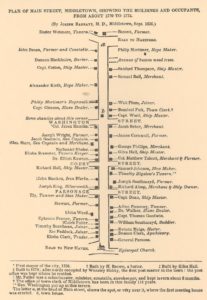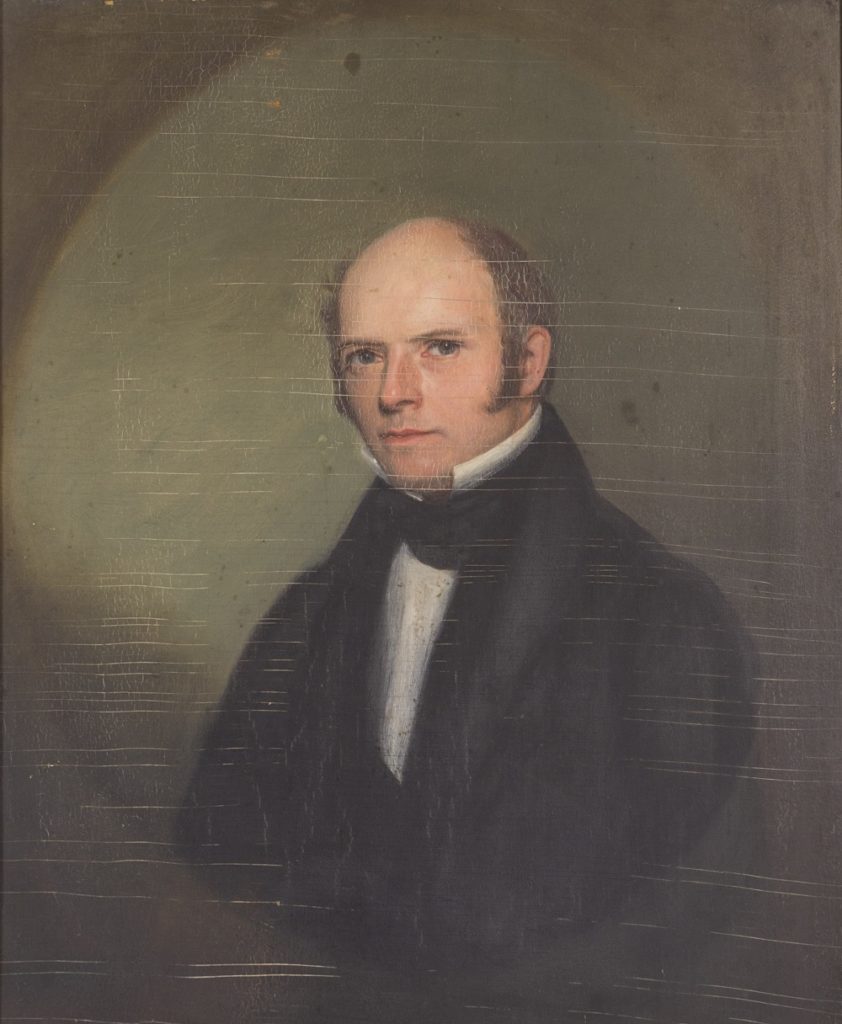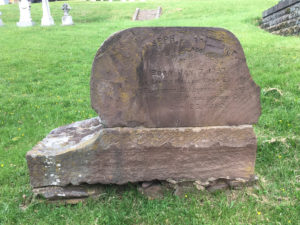By John Meszaros
Joseph Barratt was a 19th-century doctor and polymath from Middletown, Connecticut. He became a significant contributor to the study of natural history in the Connecticut Valley, particularly its fossil footprints made by dinosaurs and other prehistoric animals.
An Eclectic Naturalist
Barratt was born in 1796 in Derbyshire, UK. He acquired two medical degrees in 1819 and subsequently emigrated to the United States, settling first in Phillipstown, New York, then in Norwich, Vermont. There he became a surgeon and a professor at the American Literary, Scientific and Military Academy established by Captain Alden Partridge.
Dr. Barratt followed the Academy when it relocated to the bustling port city of Middletown, Connecticut in the mid-1820s. When the school later returned to Vermont, Barratt stayed behind to practice medicine in his new home. After Wesleyan University took over the old Academy buildings in the city, Dr. Barratt taught several botany classes at the fledgling school, though never served formally as part of the staff.

Barratt’s Map Showing the Layout of Main Street in Middletown ca. 1770. – Middlesex County Historical Society
Botany was an interest of Barratt’s early in his career, and he made several significant contributions to the study of North American flora. Over three thousand mounted plants that he collected make up a significant portion of the herbarium at Wesleyan University. The New York Botanical Gardens also acquired duplicates of his specimens which currently constitute an important component of their collections.
In addition to botany, Dr. Barratt studied the history of the local Native American peoples and published several pamphlets on their languages. He also created a map of Middletown’s downtown as it likely appeared in the 1770s.
Dr. Barratt’s interests eventually turned to geology, and Connecticut Valley fossils footprints in particular. His studies brought him into contact with Professor Edward Hitchcock of Amherst College in Massachusetts, the first person to scientifically study the tracks. Dr. Barratt provided Hitchcock with many quality trackway specimens for the latter’s growing collection. One of these slabs—which had been used for sixty years as a paving stone in Middletown—Hitchcock described as “the gem of (his) collection.” The professor even named a species of footprint, Chimaera barratti, in honor of his friend.
Strange Conclusions About Fossil Tracks
Like Hitchcock, Dr. Barratt speculated on the identity of the trackmakers. The existence of dinosaurs was not yet widely known, and Barratt initially agreed with Hitchcock that the prints had been made by gigantic birds. Over time, though, the doctor’s ideas grew increasingly strange. He believed that many of the prints had been made by a three-fingered, four-toed archaic human that he dubbed Homo tetradactylus. He also thought that alleged “bones” found in the Portland Quarry belonged to oxen and elephants that these people domesticated. He concluded that the sandstone beds were not of Mesozoic age but instead from a much younger time period that he dubbed the Kalorimazoic or “Age of Warm-Blooded Animals.” In 1874, Barratt compiled his theories into a self-published pamphlet titled, “Fossil Wonders of a Former World.” As the years passed, Dr. Barratt became increasingly stubborn in his convictions and regularly ridiculed Professor Hitchcock’s ideas, souring the relationship between the two men and alienating Barratt from other geologists as well.
In 1859, Dr. Barratt applied to present his work at the annual meeting of the American Association for the Advancement of Science in Springfield, Massachusetts, but was rejected. Undeterred, the night before the event, he gained access to the building where the meeting was to be held and hung drawings and diagrams of his research all over the walls for Association members to find the next morning.
Later Life and Institutionalization
Dr. Barratt grew increasingly senile and obsessive as he grew older. He ended up living above a drugstore in a small apartment full of botanical specimens, stone slabs, stuffed birds, brains in alcohol, minerals, skeletons, microscopes, and other curiosities. His mental faculties eventually deteriorated to the point that he was unable to care for himself. In 1880 he was committed to the Connecticut Hospital for the Insane, where he died of a stroke two years later.
Friends of Dr. Barratt made him a unique tombstone (though Barratt’s name on the front is misspelled as “Barrett”). Cut from two slabs of Portland brownstone, the grave bears dinosaur footprints, tree trunk molds, and the carved phrase “Testimony of the Rocks,” the title of a book by Scottish geologist Hugh Miller. Dr. Barratt’s grave can be found in Indian Hill Cemetery in Middletown on the western slope of the titular hill.
John Meszaros works as a visitor services specialist at the Connecticut Science Center and as a planetarium operator at the Glastonbury Planetarium.










